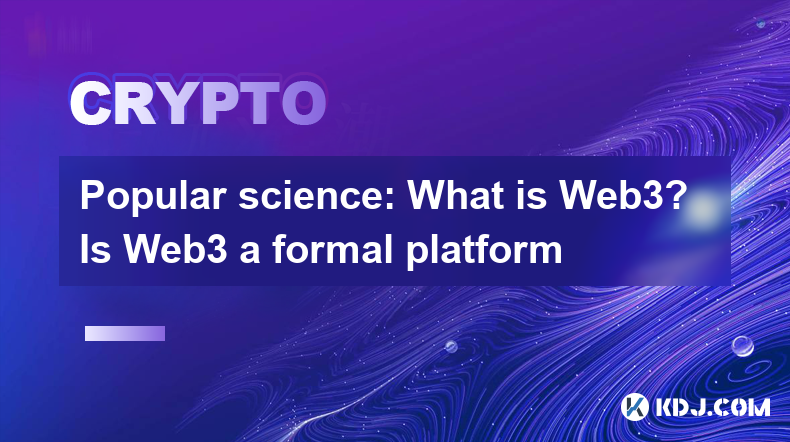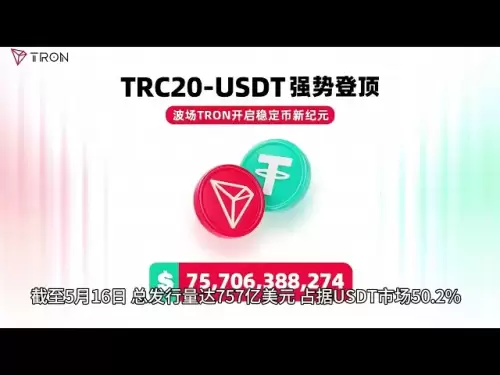-
 Bitcoin
Bitcoin $111,325.2168
2.08% -
 Ethereum
Ethereum $2,666.2932
3.87% -
 Tether USDt
Tether USDt $1.0002
0.01% -
 XRP
XRP $2.4327
1.31% -
 BNB
BNB $681.9858
2.68% -
 Solana
Solana $179.1127
3.93% -
 USDC
USDC $0.9997
0.01% -
 Dogecoin
Dogecoin $0.2414
4.06% -
 Cardano
Cardano $0.8034
4.89% -
 TRON
TRON $0.2776
1.86% -
 Sui
Sui $3.9288
-1.06% -
 Chainlink
Chainlink $16.8056
4.18% -
 Hyperliquid
Hyperliquid $32.2182
16.40% -
 Avalanche
Avalanche $25.0557
7.79% -
 Stellar
Stellar $0.3015
2.72% -
 Shiba Inu
Shiba Inu $0.0...01533
3.59% -
 Bitcoin Cash
Bitcoin Cash $434.9050
6.76% -
 Hedera
Hedera $0.2041
2.61% -
 UNUS SED LEO
UNUS SED LEO $8.8637
0.64% -
 Toncoin
Toncoin $3.1709
2.43% -
 Polkadot
Polkadot $4.9338
3.62% -
 Litecoin
Litecoin $99.2149
2.59% -
 Monero
Monero $400.2926
9.45% -
 Bitget Token
Bitget Token $5.2097
-0.56% -
 Pepe
Pepe $0.0...01444
3.52% -
 Pi
Pi $0.8132
-0.10% -
 Dai
Dai $0.9999
0.01% -
 Ethena USDe
Ethena USDe $1.0004
-0.04% -
 Bittensor
Bittensor $474.4408
11.01% -
 Uniswap
Uniswap $6.4668
2.17%
Popular science: What is Web3? Is Web3 a formal platform
Web3 empowers users with enhanced control over their data, ensuring greater privacy and user ownership, unlike Web2's reliance on centralized platforms.
Feb 05, 2025 at 08:06 pm

Key Points:
- What is Web3?
- What are the key differences between Web2 and Web3?
- What are the benefits of Web3?
- What are the challenges of Web3?
- Is Web3 a formal platform?
Popular Science: What is Web3?
Web3 is the third iteration of the internet, and it is based on the concepts of decentralization, blockchain technology, and token-based economics. Unlike Web2, which is dominated by a small number of centralized platforms such as Google, Facebook, and Amazon, Web3 is designed to be more decentralized and user-owned.
There are a number of key differences between Web2 and Web3.
- Decentralization: Web2 is controlled by a small number of centralized platforms, while Web3 is decentralized and controlled by a network of users. This means that users have more control over their data and how it is used.
- Blockchain technology: Web3 is built on blockchain technology, which is a distributed database that is used to record transactions. This makes Web3 more secure and transparent than Web2.
- Token-based economics: Web3 uses tokens to represent value and ownership. This allows users to participate in the governance of Web3 platforms and to earn rewards for their contributions.
What are the benefits of Web3?
There are a number of benefits to using Web3, including:
- Increased decentralization: Web3 is decentralized, which means that it is not controlled by a small number of centralized platforms. This makes Web3 more resistant to censorship and manipulation.
- Increased security: Web3 is built on blockchain technology, which is a distributed database that is used to record transactions. This makes Web3 more secure and transparent than Web2.
- Increased privacy: Web3 is more private than Web2, as users have more control over their data and how it is used.
- Increased user ownership: Web3 users own their data and can participate in the governance of Web3 platforms. This gives users more control over their online experience.
What are the challenges of Web3?
There are a number of challenges to using Web3, including:
- Scalability: Web3 is still in its early stages of development, and it can be difficult to scale Web3 applications to handle a large number of users.
- Complexity: Web3 is a complex technology, and it can be difficult for users to understand how it works.
- Regulation: Web3 is a new technology, and there is still a lack of regulation in the Web3 space. This can make it difficult for businesses to operate in the Web3 space.
Is Web3 a formal platform?
Web3 is not a formal platform, but rather a set of technologies and protocols that can be used to build decentralized applications. Web3 is still in its early stages of development, and it is not yet clear what the future of Web3 will hold. However, Web3 has the potential to revolutionize the internet and to give users more control over their data and online experience.
FAQs
What is the difference between Web2 and Web3?
- Web2 is controlled by a small number of centralized platforms, while Web3 is decentralized and controlled by a network of users. Web3 is also built on blockchain technology, which makes it more secure and transparent than Web2.
What are the benefits of Web3?
- The benefits of Web3 include increased decentralization, security, privacy, and user ownership.
What are the challenges of Web3?
- The challenges of Web3 include scalability, complexity, and regulation.
Is Web3 a formal platform?
- No, Web3 is not a formal platform, but rather a set of technologies and protocols that can be used to build decentralized applications.
Disclaimer:info@kdj.com
The information provided is not trading advice. kdj.com does not assume any responsibility for any investments made based on the information provided in this article. Cryptocurrencies are highly volatile and it is highly recommended that you invest with caution after thorough research!
If you believe that the content used on this website infringes your copyright, please contact us immediately (info@kdj.com) and we will delete it promptly.
- Bitcoin soared to a new all-time high above $111,000
- 2025-05-22 23:40:13
- Pepe and Influencer Pepe (INPEPE): The Rumors, Shiba's History, and Why INPEPE Could Be the Next Big Winner
- 2025-05-22 23:40:13
- Influencers Are Flocking to This Next-Gen Meme Coin, Delivering 100x Returns to Early Investors
- 2025-05-22 23:35:28
- Could Solaxy Grow , But Is It Really What Solana Needs?
- 2025-05-22 23:35:28
- Internet Computer Protocol (ICP) Has Gained 6.7% in the Past 24 Hours
- 2025-05-22 23:30:13
- Bitcoin (BTC) Hits New All-Time High of $111,861, Lifting Cardano (ADA) Price
- 2025-05-22 23:30:13
Related knowledge

What is Ethereum’s Slashing mechanism and how to punish malicious behavior?
Feb 20,2025 at 03:08am
Key PointsOverview of slashingDifferent types of slashing in EthereumIncentives and consequences of slashingIdentifying and reporting slashed validatorsOngoing discussions and potential improvementsEthereum's Slashing Mechanism: Punishing Malicious BehaviorEthereum's slashing mechanism is an essential tool for ensuring network security and punishing mal...

What is the verifier node of Ethereum and how to become a verifier?
Feb 19,2025 at 06:00pm
The Verifier Node of Ethereum: A Comprehensive GuideKey Points:What is a Verifier Node?How to Become a Verifier NodeResponsibilities and Rewards of a Verifier NodeMinimum Requirements for Becoming a Verifier NodePotential Difficulties in Running a Verifier Node1. What is a Verifier Node?A Verifier Node is an independent entity on the Ethereum network th...

What is Ethereum’s staking, and how to participate and earn money?
Feb 19,2025 at 04:37pm
Key Points:Understanding Ethereum's Staking MechanismSteps to Participate in StakingBenefits and Rewards of StakingSecurity and Risk ConsiderationsTechnical Requirements and Hardware OptionsPotential Challenges and Troubleshooting TipsFAQs on Ethereum StakingWhat is Ethereum's Staking?Proof-of-Stake (PoS) is a consensus mechanism used in blockchain netw...

What is Ethereum’s DAO (Decentralized Autonomous Organization) and how does it work?
Feb 20,2025 at 03:12am
Key PointsDefinition and Structure of a DAOGovernance and Decision-Making in DAOsBenefits and Use Cases of DAOsChallenges and Limitations of DAOsWhat is Ethereum's DAO (Decentralized Autonomous Organization) and How Does It Work?Definition and Structure of a DAOA Decentralized Autonomous Organization (DAO) is an innovative governance and management fram...

What is Ethereum's multi-signature wallet and how to improve security?
Feb 20,2025 at 02:18pm
Key Points:Understanding the Concept of a Multi-Signature WalletBenefits and Drawbacks of Multisig WalletsRequirements for Setting Up a Multisig WalletStep-by-Step Guide to Generating a Multisig WalletImplementing Strategies for Enhanced Security1. Understanding the Concept of a Multi-Signature WalletA multi-signature (multisig) wallet in the Ethereum e...

What is Ethereum's oracle and how to provide data for smart contracts?
Feb 21,2025 at 01:30am
Key Points:Understanding the concept of oracles in EthereumExploring different types of oraclesDetailed guide on how to provide data for smart contractsAddressing potential challenges and considerationsWhat is Ethereum's Oracle?Oracles are crucial components in the Ethereum ecosystem, enabling smart contracts to access real-world data and off-chain even...

What is Ethereum’s Slashing mechanism and how to punish malicious behavior?
Feb 20,2025 at 03:08am
Key PointsOverview of slashingDifferent types of slashing in EthereumIncentives and consequences of slashingIdentifying and reporting slashed validatorsOngoing discussions and potential improvementsEthereum's Slashing Mechanism: Punishing Malicious BehaviorEthereum's slashing mechanism is an essential tool for ensuring network security and punishing mal...

What is the verifier node of Ethereum and how to become a verifier?
Feb 19,2025 at 06:00pm
The Verifier Node of Ethereum: A Comprehensive GuideKey Points:What is a Verifier Node?How to Become a Verifier NodeResponsibilities and Rewards of a Verifier NodeMinimum Requirements for Becoming a Verifier NodePotential Difficulties in Running a Verifier Node1. What is a Verifier Node?A Verifier Node is an independent entity on the Ethereum network th...

What is Ethereum’s staking, and how to participate and earn money?
Feb 19,2025 at 04:37pm
Key Points:Understanding Ethereum's Staking MechanismSteps to Participate in StakingBenefits and Rewards of StakingSecurity and Risk ConsiderationsTechnical Requirements and Hardware OptionsPotential Challenges and Troubleshooting TipsFAQs on Ethereum StakingWhat is Ethereum's Staking?Proof-of-Stake (PoS) is a consensus mechanism used in blockchain netw...

What is Ethereum’s DAO (Decentralized Autonomous Organization) and how does it work?
Feb 20,2025 at 03:12am
Key PointsDefinition and Structure of a DAOGovernance and Decision-Making in DAOsBenefits and Use Cases of DAOsChallenges and Limitations of DAOsWhat is Ethereum's DAO (Decentralized Autonomous Organization) and How Does It Work?Definition and Structure of a DAOA Decentralized Autonomous Organization (DAO) is an innovative governance and management fram...

What is Ethereum's multi-signature wallet and how to improve security?
Feb 20,2025 at 02:18pm
Key Points:Understanding the Concept of a Multi-Signature WalletBenefits and Drawbacks of Multisig WalletsRequirements for Setting Up a Multisig WalletStep-by-Step Guide to Generating a Multisig WalletImplementing Strategies for Enhanced Security1. Understanding the Concept of a Multi-Signature WalletA multi-signature (multisig) wallet in the Ethereum e...

What is Ethereum's oracle and how to provide data for smart contracts?
Feb 21,2025 at 01:30am
Key Points:Understanding the concept of oracles in EthereumExploring different types of oraclesDetailed guide on how to provide data for smart contractsAddressing potential challenges and considerationsWhat is Ethereum's Oracle?Oracles are crucial components in the Ethereum ecosystem, enabling smart contracts to access real-world data and off-chain even...
See all articles
























































































